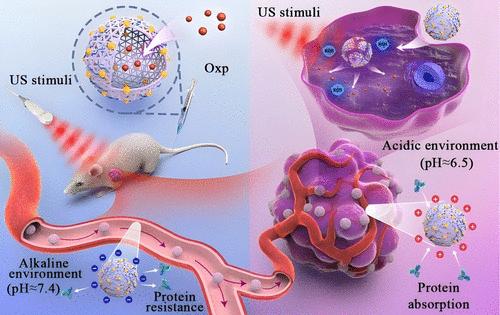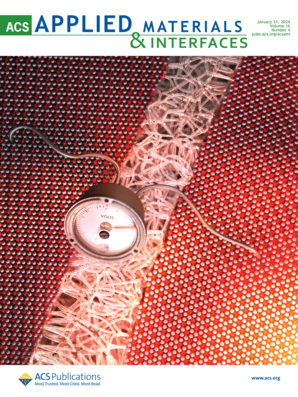超声触发纳米凝胶促进结直肠癌的化疗和免疫调节
IF 8.2
2区 材料科学
Q1 MATERIALS SCIENCE, MULTIDISCIPLINARY
引用次数: 0
摘要
化疗是结直肠癌的主要治疗方法。然而,其疗效受到化疗耐药的限制,这主要是由肿瘤内药物积累不足和免疫抑制微环境引起的。为了解决这些限制,我们开发了一种低强度超声(LIU)控制和电荷可逆的纳米凝胶(R-NG),利用共轭壳聚糖-聚吡咯聚合物通过硫酮键连接,并将TiO2吸附在其表面。在装载奥沙利铂后,最终合成了oxa - r - ng。在酸性肿瘤环境中,吡咯环的质子化触发Oxa-R-NG转化为带正电的形式,从而增强肿瘤穿透和细胞内化。基于电荷转换,LIU触发肿瘤内积聚的Oxa-R-NG持续产生活性氧(reactive oxygen species, ROS),不仅破坏硫酮键释放奥沙利铂,还调节肿瘤相关巨噬细胞极化。因此,Oxa-R-NG通过改善肿瘤内药物积累和逆转局部免疫抑制微环境协同促进结直肠癌的化疗。本文章由计算机程序翻译,如有差异,请以英文原文为准。

Ultrasound-Triggered Nanogel Boosts Chemotherapy and Immunomodulation in Colorectal Cancer
Chemotherapy is the primary therapy for colorectal cancer. However, its efficacy has been limited by chemoresistance, which is mainly caused by inadequate intratumoral drug accumulation and immunosuppressive microenvironments. To address these limitations, we developed a low-intensity ultrasound (LIU)-controlled and charge-reversible nanogel (R-NG), utilizing conjugated chitosan-polypyrrole polymers linked via thioketal bonds, with TiO2 absorbed onto its surface. Following the loading of oxaliplatin, the Oxa-R-NGs were ultimately synthesized. In the acidic tumor environment, the protonation of the pyrrole ring triggered the conversion of Oxa-R-NG into a positively charged form, thereby enhancing tumor penetration and cellular internalization. Based on the charge conversion, intratumoral accumulating Oxa-R-NG was triggered by LIU to continuously generate reactive oxygen species (ROS), which not only disrupted thioketal bonds to liberate oxaliplatin but also regulated tumor-associated macrophage polarization. Consequently, Oxa-R-NG boosted the chemotherapy for colorectal cancer by improving intratumoral drug accumulation and reversing the local immunosuppressive microenvironment synergistically.
求助全文
通过发布文献求助,成功后即可免费获取论文全文。
去求助
来源期刊

ACS Applied Materials & Interfaces
工程技术-材料科学:综合
CiteScore
16.00
自引率
6.30%
发文量
4978
审稿时长
1.8 months
期刊介绍:
ACS Applied Materials & Interfaces is a leading interdisciplinary journal that brings together chemists, engineers, physicists, and biologists to explore the development and utilization of newly-discovered materials and interfacial processes for specific applications. Our journal has experienced remarkable growth since its establishment in 2009, both in terms of the number of articles published and the impact of the research showcased. We are proud to foster a truly global community, with the majority of published articles originating from outside the United States, reflecting the rapid growth of applied research worldwide.
 求助内容:
求助内容: 应助结果提醒方式:
应助结果提醒方式:


